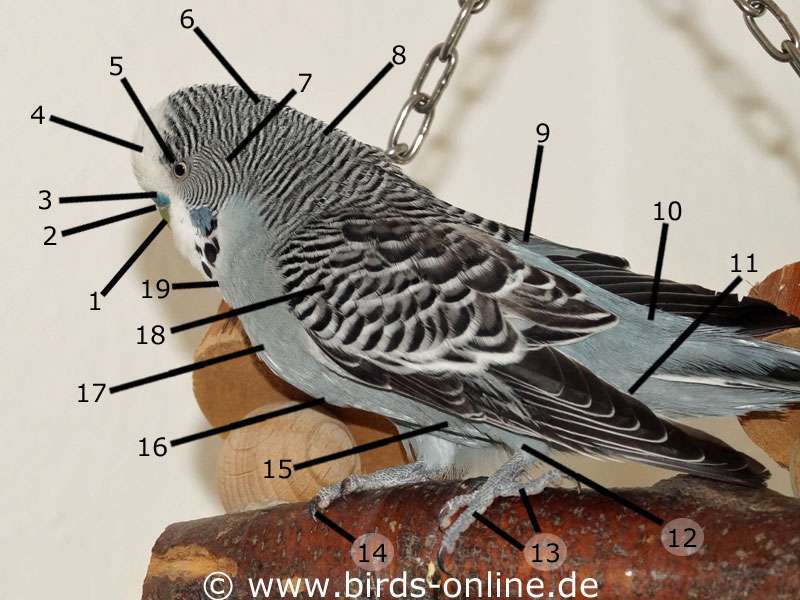- >>
- Birds Online – English
- >>
- Health and diseases
- >>
- General health topics
- >>
- Bird anatomy
Bird anatomy
As a bird owner, you probably know very well how a bird’s plumage looks. However, if for example, you have to describe where a bird is injured or where you have spotted something unusual like a swelling, you should better be more precise than “right below the wave pattern on the left”. Descriptions like these are far too inaccurate. Another example is that people say a claw is broken. And then it turns out that they actually didn’t talk about the claw (a bird’s toenail) but the whole toe. It makes a big difference if only a part of the claw is broken off or if the bone in the toe is broken. Besides, beak and nose (cere) are often confused, which can easily lead to misunderstandings between avian vet and bird owner while they’re discussing a bird’s health condition on the phone.
Because not every bird owner has the same basic knowledge about the anatomy of birds, it is important to acquire appropriate insights. If one of your birds is ill and you want to describe what happened on the phone while you’re making an appointment with your avian vet, things are much easier for you. With this knowledge, you can exactly describe at which part of the body of your feathered patient the symptoms or injuries appeared.
Based on the illustration below, you can learn the most important anatomical details of the budgies and other birds. In the list, the green items are linked to further chapters, which you can access by clicking. For some anatomical details, such as the back of the head, there are no further explanations; these list items are black.

Key to the illustration above
1 Beak (upper and lower mandible)
2 Cere (nose)
3 Nostril (nare)
4 Forehead
5 Eye
6 Back of the head
7 Ear
8 Neck (nape)
9 Back
10 Rump and preen gland (uropygial gland)
11 Cloaca or vent (is located on the underside of the body)
12 Leg
13 Toes
14 Claws
15 Abdomen
16 Breast (keel)
17 Crop
18 Wing
19 Throat
If you would like learn more about the digestive system of the birds, please click here.
